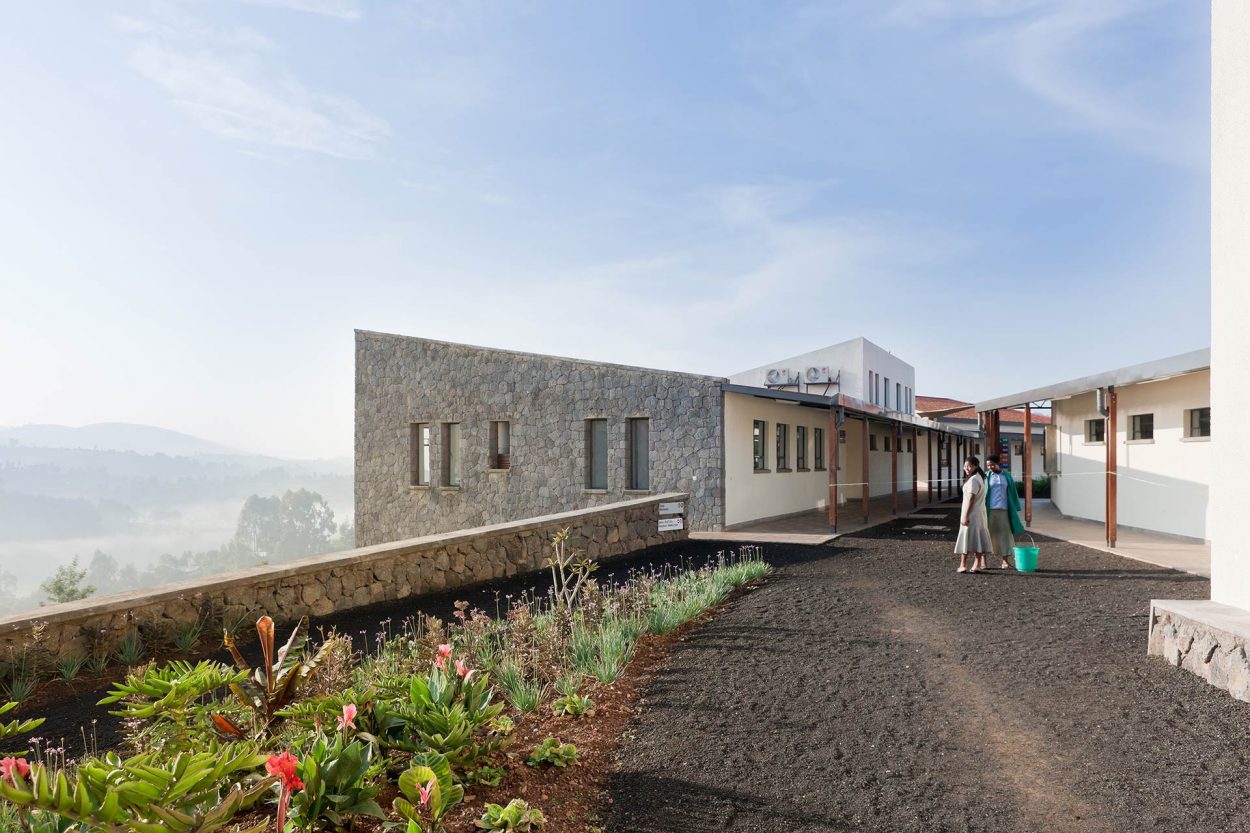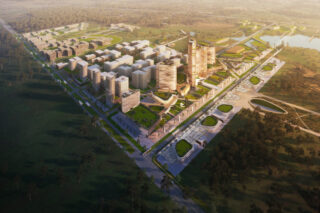Studies show that design promotes patient recovery and health tourism, but the question is: Can we now finally see development in how our hospitals are being designed and built?
The health tourism trend calls for interiors that mimic the room of a luxury hotel. Hospitals responding to this trend have patient rooms that include—but are not limited to—ceiling-to-floor windows with a beautiful view, such as seen at the Mount Elizabeth Novena Hospital in Singapore, a country that is part of the booming medical tourism industry in Asia—an industry also staked in Africa and beyond.
Patients from all over the world have started to discover these destinations that offer complete wellness packages and enhanced patient experience through its well-designed interiors, amenity-rich spaces and expert medical teams performing various treatments and transplants. With rising medical costs globally, one would be more inclined to recover and travel to a place where the healthcare costs are lower, in a well-designed environment full of amenities that lead to quicker recovery, as proven by studies from The Center of Health Design.
Enhancing Patient Experience
A study conducted by Jason A. Wolf, President of The Beryl Institute and Founding Editor of Patient Experience Journal proved that amenities and the environment matters to patient experience. (Watch the Webinar here from the Center of Health Design).

Ng Teng General Hospital designed by HOK in Singapore.
The Ng Teng General Hospital designed by HOK in Singapore is an example of a general hospital that enhances patient experience through the way its wardrooms are built, with each patient having their own window, and an individual modular bed that can be freely adjusted in a position to receive natural light and ventilation coming through the adjacent windows. HOK Senior Medical Planner Shiva Mendez stated in a press release:
“By providing patients with access to nature, daylight and natural ventilation, the design dramatically improves the patient experience with only a modest increase in square footage and cost.”
Another medical establishment that has improved patient experience through its well-designed environment is the ERHA Clinic in Surabaya, Indonesia. Here is a clinic that provides care to its patients through its amenities and fully-fitted patient treatment rooms.

ERHA Clinic Patient Treatment Room. Courtesy of ERHA Clinic.
Materials and Elements for Sustainable and Hygienic Spaces
Incorporation of plants, artworks and design objects in interior and outdoor spaces of hospitals a have a positive impact on patient recovery as well, with Dr.Roger Ulrich, one of the members of The Center of Health Design citing in one of his studies that nature, gardens and art can lessen pain, stress and healthcare costs.
Artwork. In South Africa, The Nelson Mandela Children’s Hospital, designed and built by Sheppard Robson, John Cooper Architecture, and GAPP has stepped up in facilitating child patient recovery by adding colorful artwork in its rooms and art objects in its lobby, making it better for child patients to recover in an environment that awaken their imaginations.
The first EPA-registered paint that kills greater than 99.9% of Staph, MRSA, E. coli, VRE, and Enterobacter aerogenes.
Materials. When it comes to choosing materials to enhance the environment of a hospital, studies recommend using carpet tiles for the flooring to reduce noise and slippage. Using newly developed wall paints to kill bacteria is recommended as well, like the Sherwin-Williams Paint Shield Microbicidal Paint, one of the new brands of antimicrobial paint on the market that kills greater than 99.9% of Staph, MRSA, E. coli, VRE, and Enterobacter aerogenes within two hours of exposure on a painted surface.
Color. The choice of color in healthcare design is a key element, as studies have proven: “color impacts healthcare outcomes by reducing medical errors, promoting the sense of well-being, reducing stress, improving patients sleep, reducing length of stay, reducing spatial disorientation, increasing patient satisfaction, and increasing staff morale and productivity.”
The Butaro District Hospital in Rwanda designed and built by MASS Design Group in collaboration with Partners in Health is an example of a hospital that incorporates vibrant colors in its interiors and furniture, complemented by plants and an outdoor view of a fertile green landscape that facilitates a harmonious environment for both patients and healthcare workers.

The Butaro District Hospital in Rwanda. Courtesy of MASS Design Group.
John Cary, author of Design for Good, mentioned the Butaro District Hospital in his recent speech at the Brainstorm Design in Singapore. During the speech, Cary stated:
The Butaro District Hospital is more advanced and has better health outcomes than many of the so-called first-world hospitals. The little things are important, like a window view of nature from one’s bed—something we know from studies aids healing.
Watch a brief part of Cary’s speech at the Brainstorm Design here.
Good Design Invites Health Tourism
When a hospital is built and designed well, it is reflected by the number of patients checking in and recovering quickly. The increasing number of American patients coming to India’s wellness centers and hospitals, like the Indraprastha Apollo Hospital is exemplary of how good hospital design paired with world-class medical service at a low cost fosters health tourism which in turn boosts the economy and empowers the community. Government cooperation also plays a big role in the promotion of hospitals and India’s government has proactive initiatives in promoting medical tourism that would make it easier for private sectors to build better-designed hospitals fitted with the best amenities that facilitate faster patient recovery and in turn, gain profit in the long run.
Cary pointed out that designing better hospitals is a win-win situation for both the private and social sectors. India’s medical tourism sector was estimated to be worth US$3 billion in 2015, and as this number continues to grow, it may be time for hospitals around the world to catch up and update their respective facilities by renovating their spaces by incorporating the best materials, amenities and design elements that would promote better patient experience and increase patient traffic. Cary concluded:
“Everyone deserves good design because good design is not just a matter of taste or a question of aesthetic, it literally shapes people’s ideas about who they are in the world and what they deserve.”











